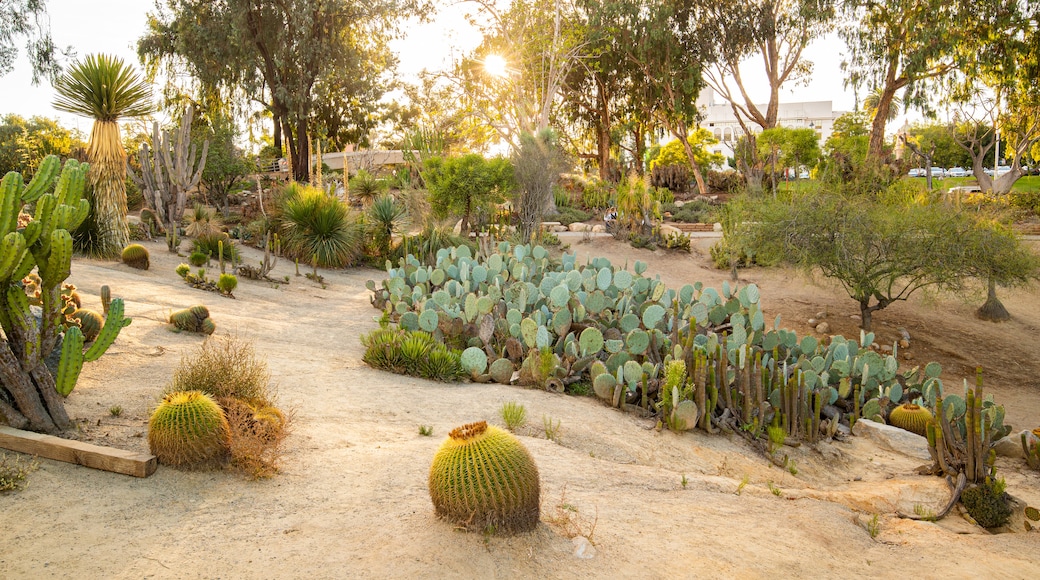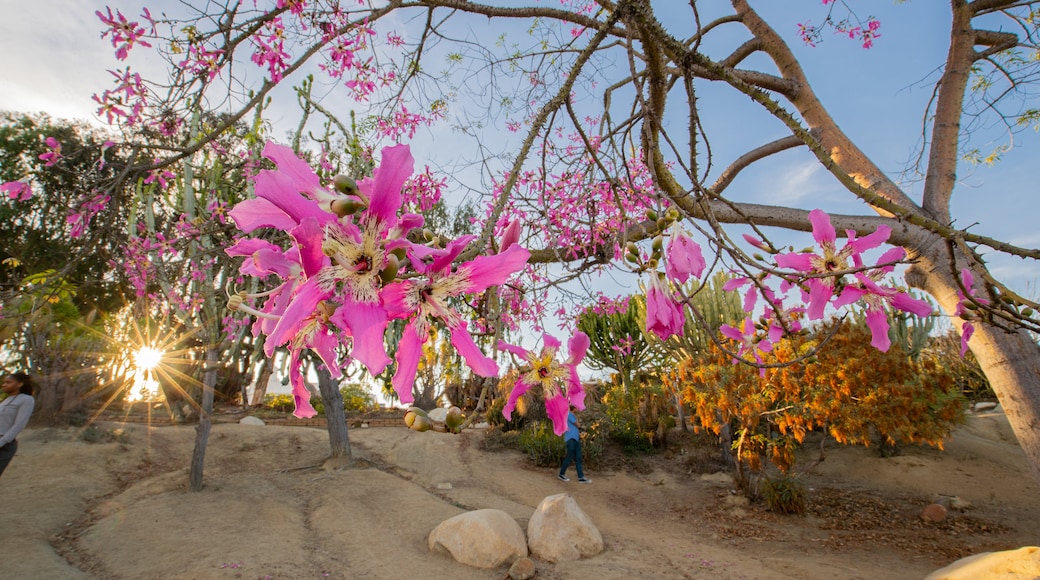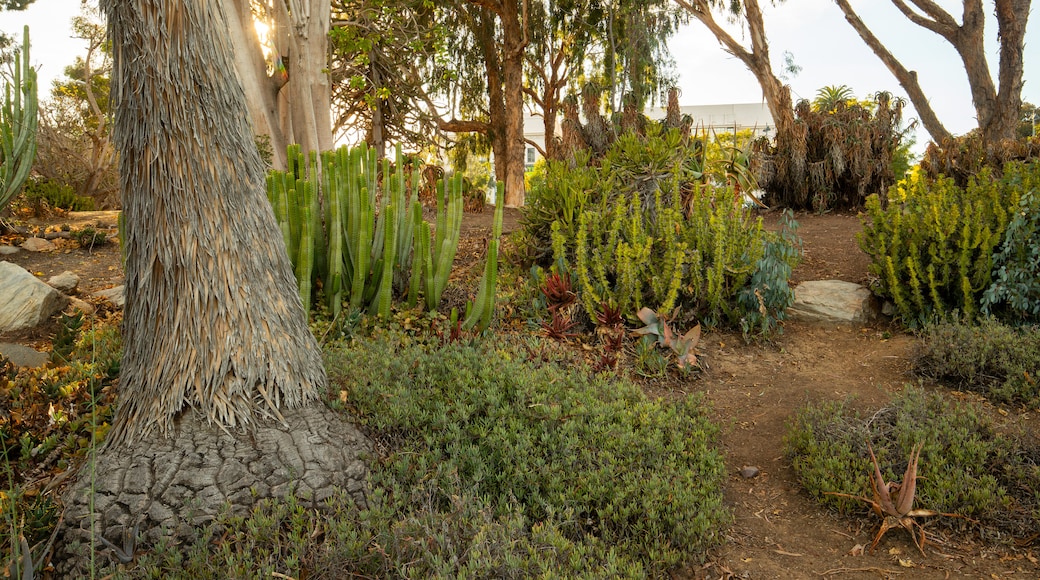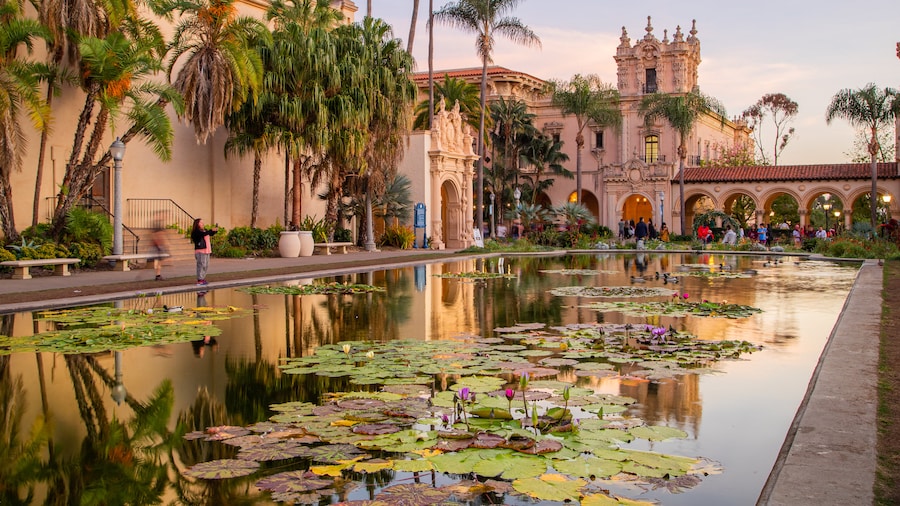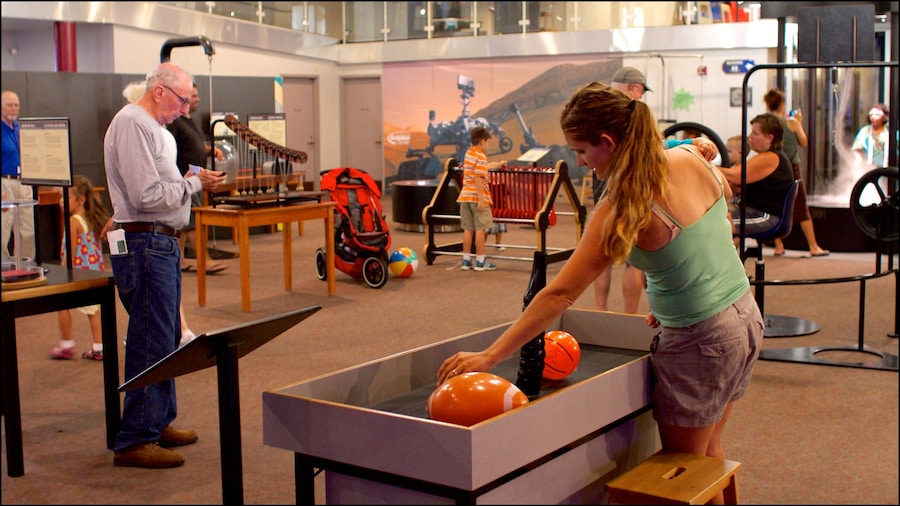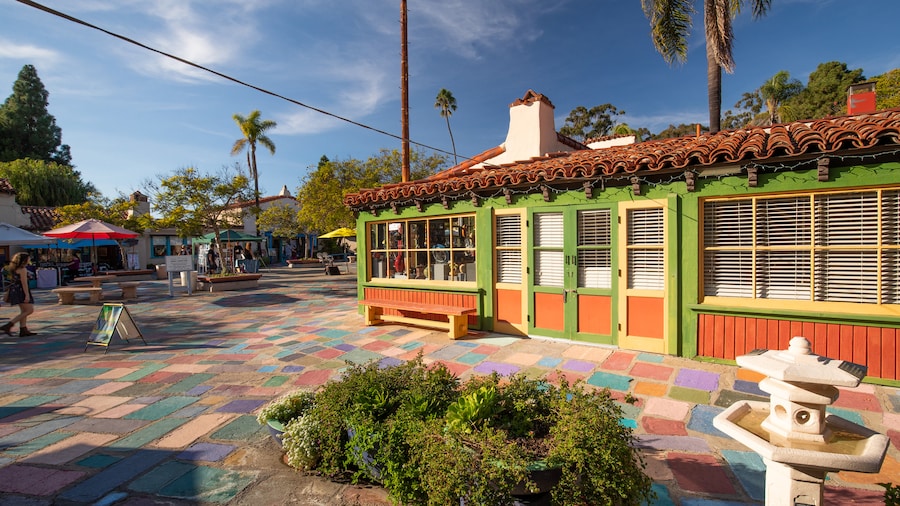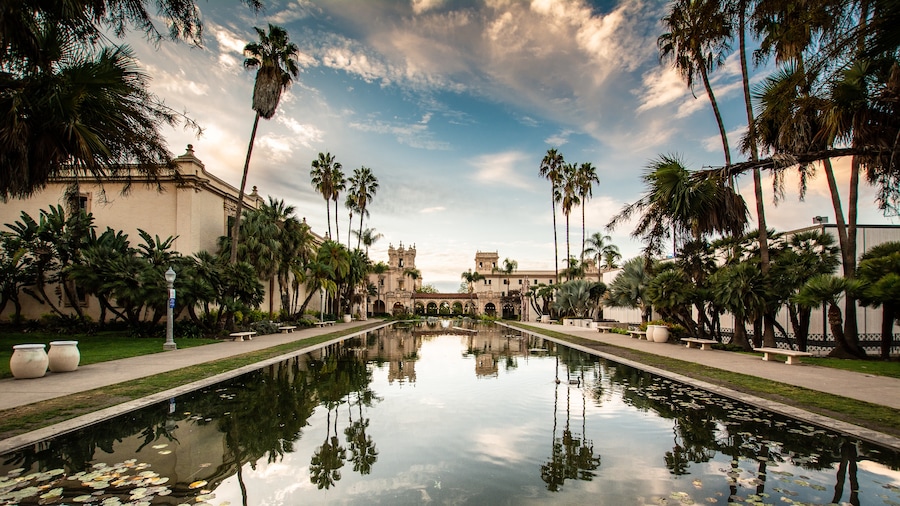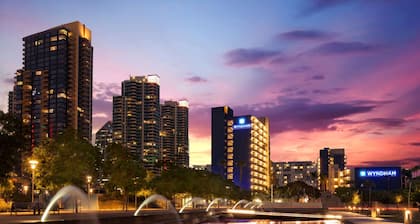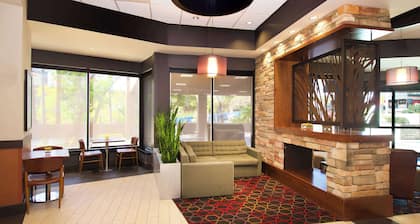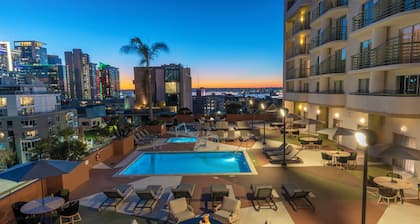San Diego is by all appearances a lush city, but it borders desert, easily observed by driving just outside the city core to visit Desert Garden. Reach the garden by going through sprawling Balboa Park and crossing the pedestrian bridge near the San Diego Natural History Museum.
The garden’s 2.5 acres (1 hectare) has a large collection of cacti, bromeliads and many succulents, with more than 1,300 individual plants. The area is arid in keeping with its desert status, so wear a hat, as you are unlikely to find much shade.
One benefit of including this garden in a visit is appreciating the number of fascinating plant shapes and colors. Visit from January to March when the garden often explodes with brilliant hues such as the yellow blooms on the palo verde, the reddish orange of aloe thraskii or light green foliage of the Queensland bottle tree.
The Joshua tree is shaped very artistically while the weeping Euphorbia ingens is surrealistic, similar to some of the creative drawings of Dr. Seuss. Imagine the symmetric quiver tree as the perfect specimen to have on a front lawn however, it is, once again, a desert plant.
Walk on flat paved pathways through this collection of plants that are sourced both locally and from other arid regions of the world. The setting is particularly photographic at dusk.
Compared to other parts of Balboa Park, which dates back to 1868, Desert Garden is from the mid 1970s and a relative newcomer. Don’t confuse this spot with the much older Cactus Garden in another area of the same park. Visit the nearby Inez Grant Parker Memorial Rose Garden, which is included with free admission and is always open.
Spend a bit more time in Balboa Park to visit other areas with interesting vegetation, including the Japanese Friendship Garden, the Australian Garden and the EthnoBotany Children’s Peace Garden.
